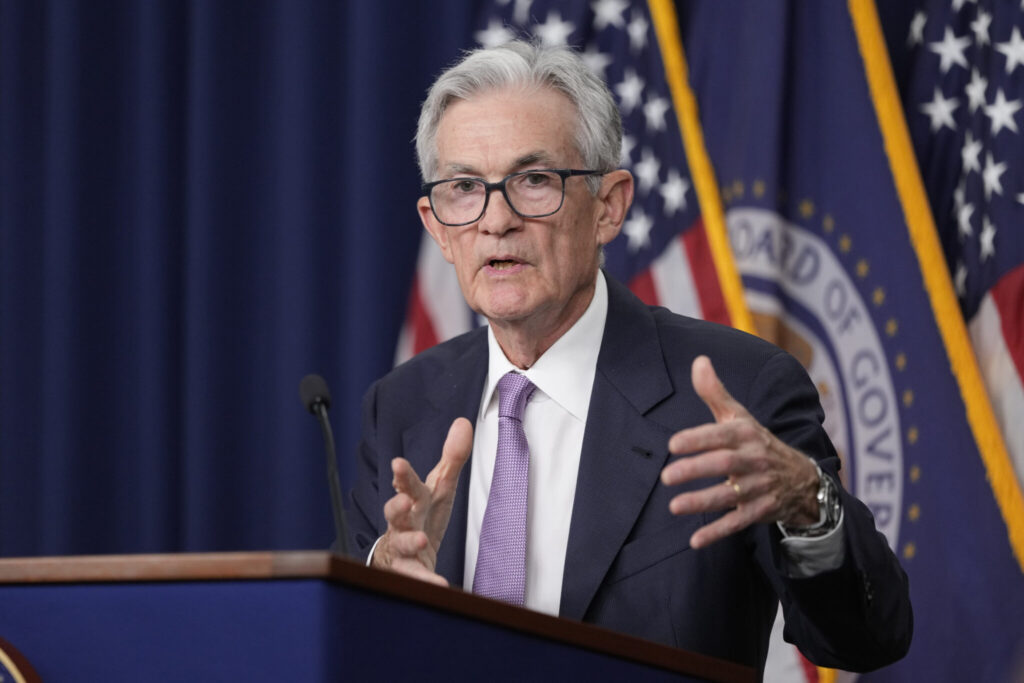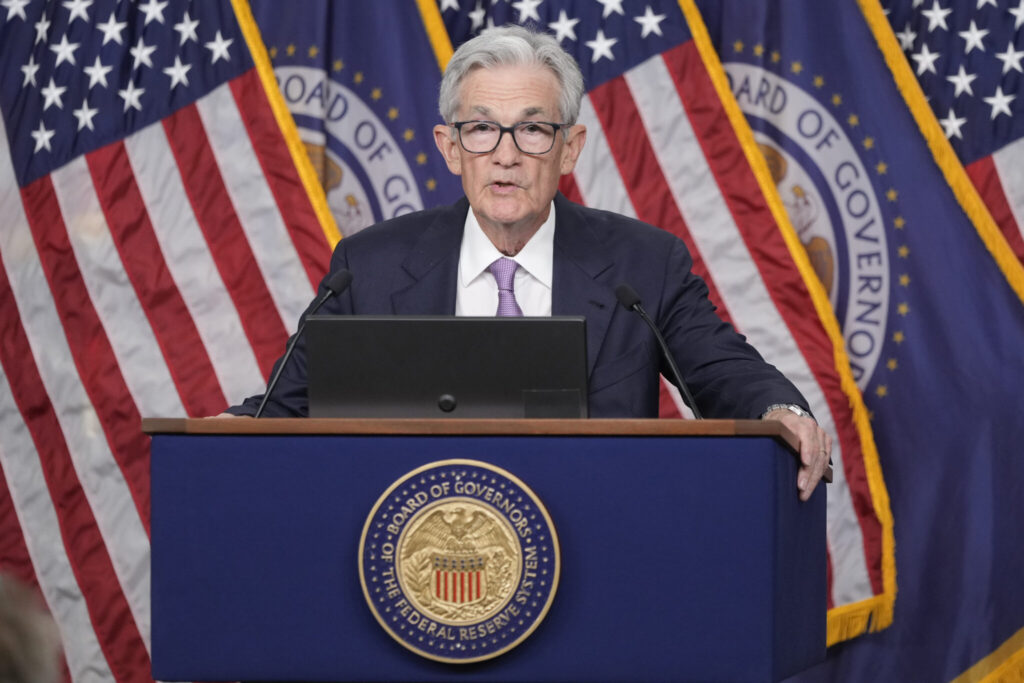Interest rate reduction/ rate cut/ Fed cuts rates/ inflation-fighting policy/ economic recovery/ Jerome Powell Fed/ Newslooks/ WASHINGTON/ J. Mansour/ Morning Edition/ The Federal Reserve cut its benchmark interest rate by a significant half-point on Wednesday, marking a pivot from its focus on fighting inflation to supporting a slowing job market. With inflation down to 2.5% from a peak of 9.1% in 2022, the Fed’s move aims to reduce borrowing costs for consumers and businesses while managing the risk of rising unemployment.

Federal Reserve Cuts Interest Rates by Half-Point, Shifts Focus from Inflation: Quick Looks
- Rate Cut: The Fed cut interest rates by 0.5%, its first reduction in over four years, bringing the rate down to 4.8%.
- Inflation Tamed: Inflation has fallen from a high of 9.1% in mid-2022 to 2.5% in August, close to the Fed’s target of 2%.
- Job Market Focus: The Fed’s priority has shifted to supporting a slowing job market, with additional rate cuts expected in the coming months.
- Political Implications: The rate cut comes weeks before the presidential election, potentially influencing the economic landscape.
Fed Makes Dramatic Half-Point Rate Cut as Focus Shifts to Job Market
Deep Look:
The Federal Reserve made a decisive move on Wednesday by cutting its benchmark interest rate by an unusually large half-point, marking a clear shift from its long-standing fight against inflation to a new focus on stabilizing the job market. The rate cut, which brings the Fed’s key rate down to approximately 4.8%, comes after more than two years of steadily high rates that were implemented to curb the worst inflation streak in four decades.
The central bank’s latest move, just weeks before the presidential election, is expected to impact borrowing costs for consumers and businesses alike. The rate cut is the Fed’s first in more than four years, a shift that reflects progress in its inflation-fighting efforts. Inflation, which peaked at 9.1% in June 2022, has steadily declined to a three-year low of 2.5% as of August, nearing the Fed’s target of 2%.
During a news conference, Fed Chair Jerome Powell expressed confidence in the Fed’s progress in reducing inflation but noted that the battle isn’t fully over. “We’re not saying, ‘mission accomplished,’” Powell said, “but we’re encouraged by the progress that we have made.”
The Fed’s decision to cut rates is also intended to support a slowing job market. Over the past year, unemployment has risen nearly a full percentage point, from a 50-year low of 3.4% to its current rate of 4.2%. This rate hike marks the central bank’s effort to support job growth and prevent further deterioration in the labor market.
Powell highlighted the Fed’s concern for preserving the health of the job market, explaining that acting now could prevent further weakening of employment conditions. “There is thinking that the time to support the labor market is when it’s strong and not when you begin to see the layoffs,” he said.
Impact on Borrowing Costs and the Economy
Lowering the key interest rate by half a percentage point is expected to bring relief to consumers who have been dealing with high borrowing costs for mortgages, credit cards, and auto loans. Average mortgage rates, which have already dropped to an 18-month low of 6.2%, are expected to fall further. This will likely encourage homeowners to refinance their mortgages and shift their credit card debt to lower-cost loans, easing the financial burden on households.
The Fed’s projections indicate more rate cuts are likely to follow, with another half-point reduction expected by the end of the year. Analysts predict that these cuts will gradually boost consumer spending and business investment, helping to sustain economic growth.
“It’s a step in the right direction,” said Laura Rosner-Warburton, senior economist at MacroPolicy Perspectives, noting that the Fed’s plan for future cuts will “prevent risks from building and the unemployment rate from rising.”
Political Timing and Economic Debate
The timing of the rate cut, just weeks before the presidential election, could have significant political implications. Former President Donald Trump has repeatedly criticized the Biden-Harris administration for its handling of inflation, while Vice President Kamala Harris has warned that Trump’s economic policies, particularly his promise to impose tariffs, could exacerbate inflation.
Powell, however, insisted that the Fed’s decision was not politically motivated. “We’re not serving any politician, any political figure, any cause, any issue,” he said. “It’s just maximum employment and price stability on behalf of all Americans.”
While some Republicans, including Trump, have accused the Fed of waiting too long to lower rates, Powell rejected the notion that the central bank had fallen behind in addressing the slowing job market. He emphasized that the decision to cut rates was a proactive step, saying, “We don’t think we’re behind. We think this is timely.”
Powell’s assessment of the economy as fundamentally healthy contrasts with the more dire warnings from Trump, who has argued that the economy is at risk of a major downturn.
Challenges Ahead and the Path Forward
While inflation has come down significantly, the Fed still faces the challenge of managing rising unemployment. The Fed’s latest projections show that unemployment could rise to 4.4% by the end of the year and remain there through 2025, up from previous estimates of 4%. Although wage growth has slowed and oil prices are falling, helping to ease inflationary pressures, there is still concern that economic growth could weaken.
In addition, the Fed’s decision to cut rates drew some dissent from within the central bank. Board member Michelle Bowman, who has expressed concerns that inflation may not be fully under control, argued in favor of a smaller, quarter-point rate cut rather than the more aggressive half-point move.
Despite these challenges, Powell remains optimistic that the economy is in a good position. “The U.S. economy is in a good place,” he said, adding that the Fed’s decisions are designed to keep it that way.







